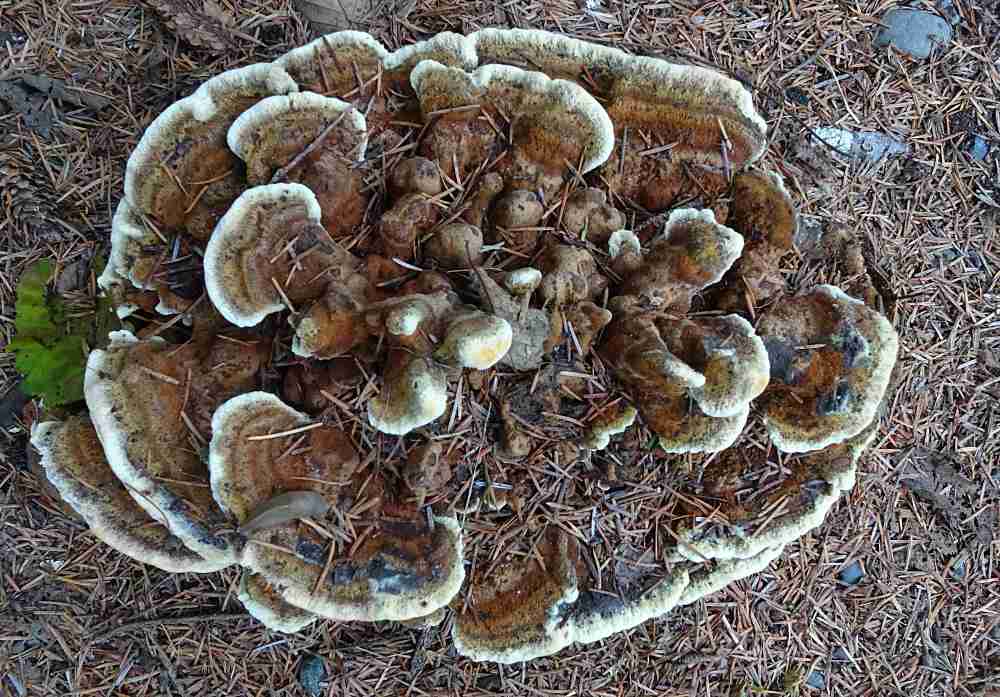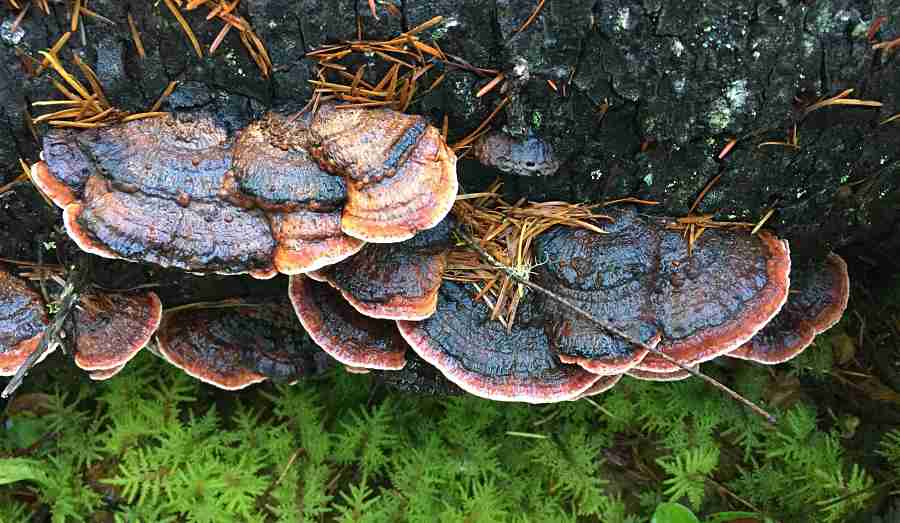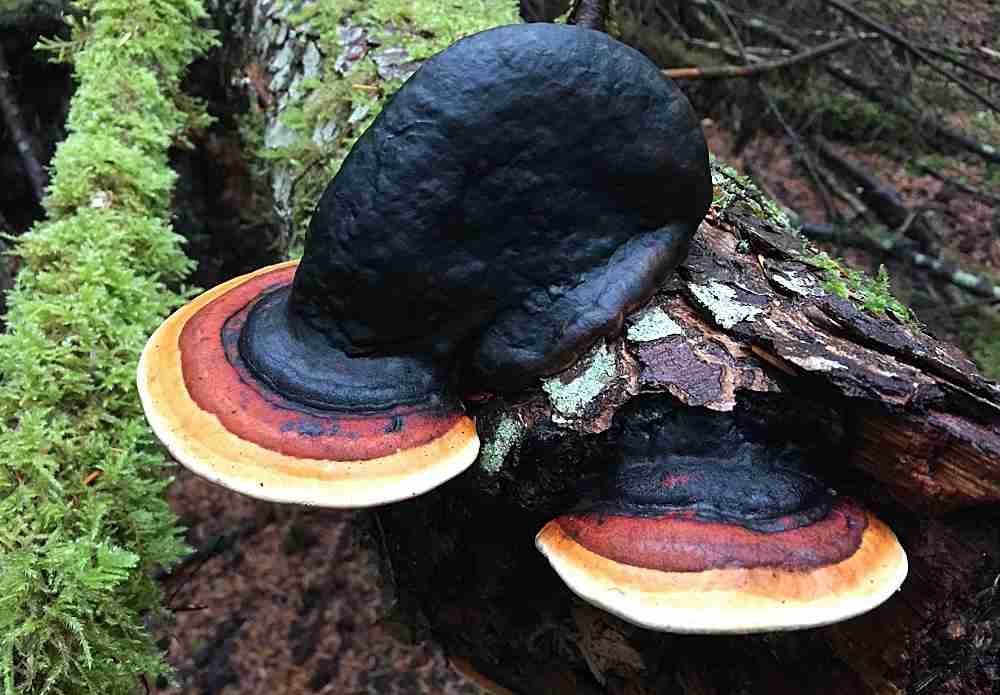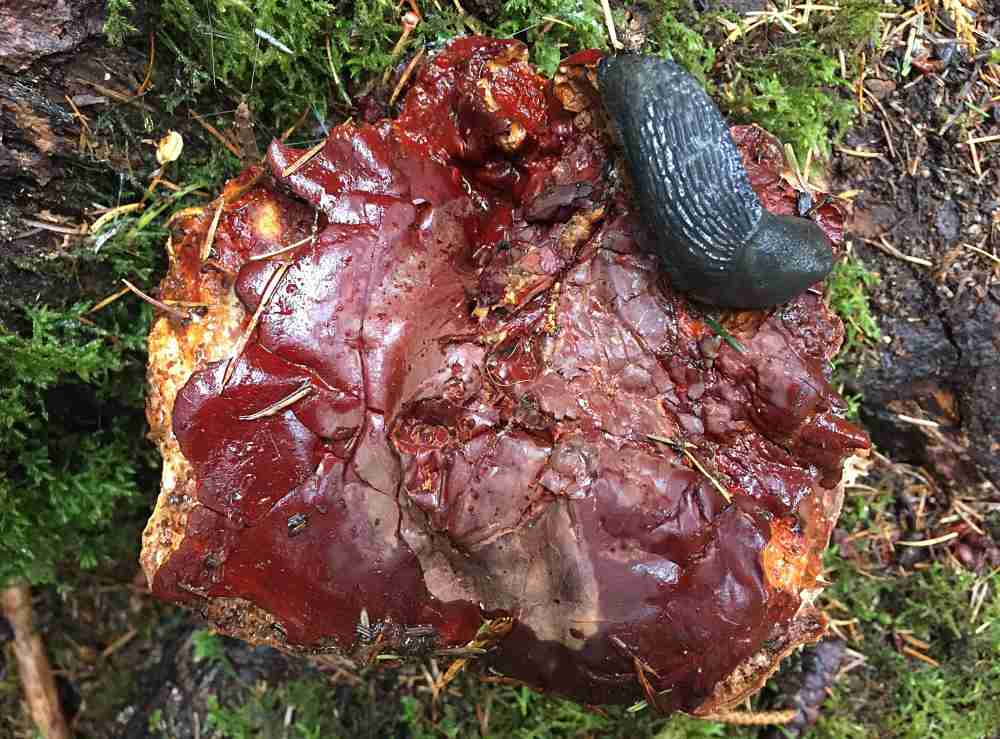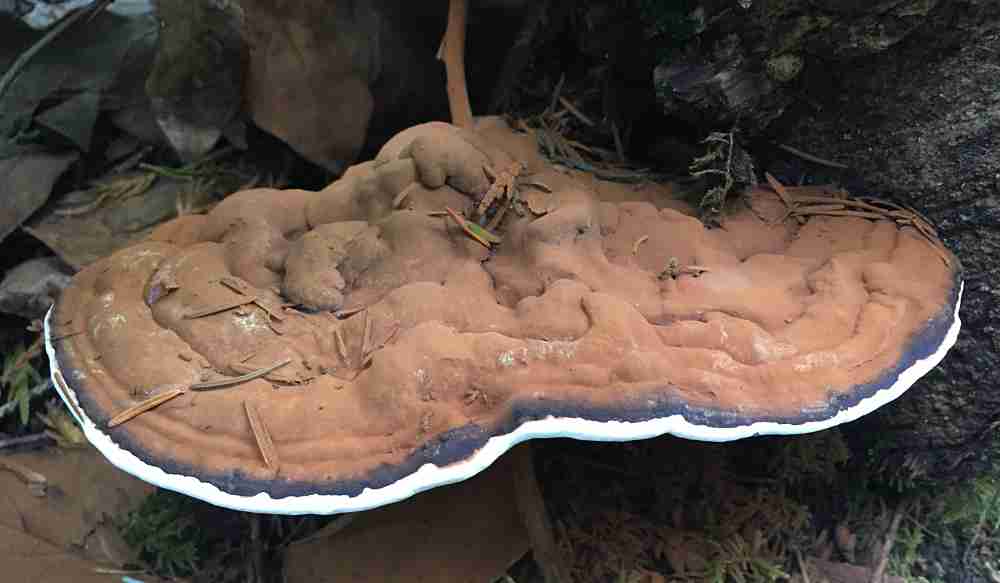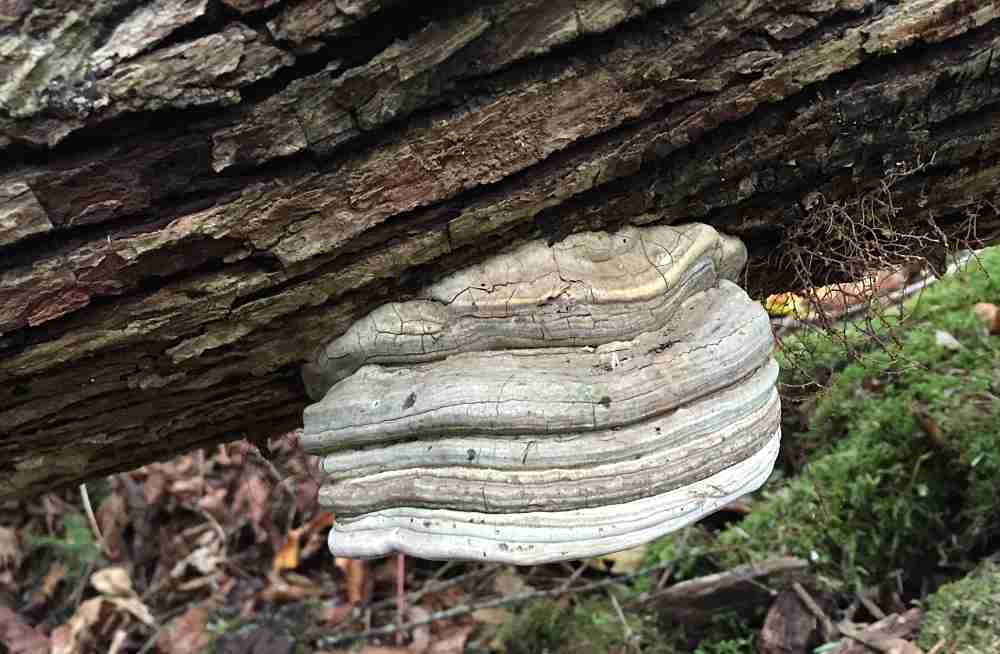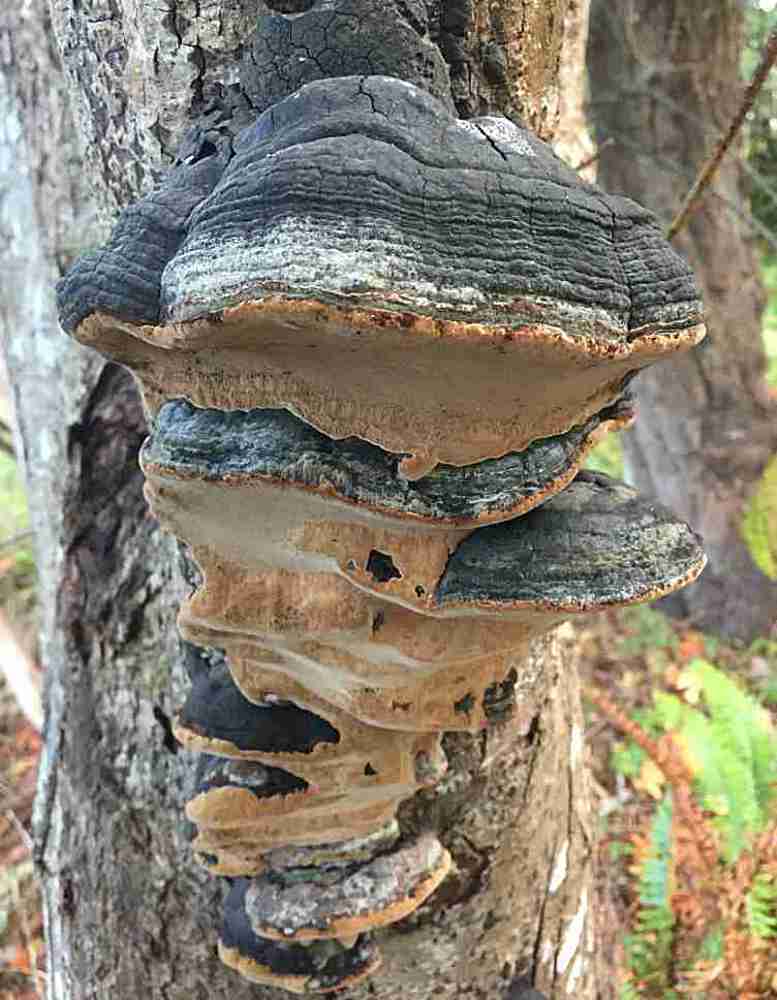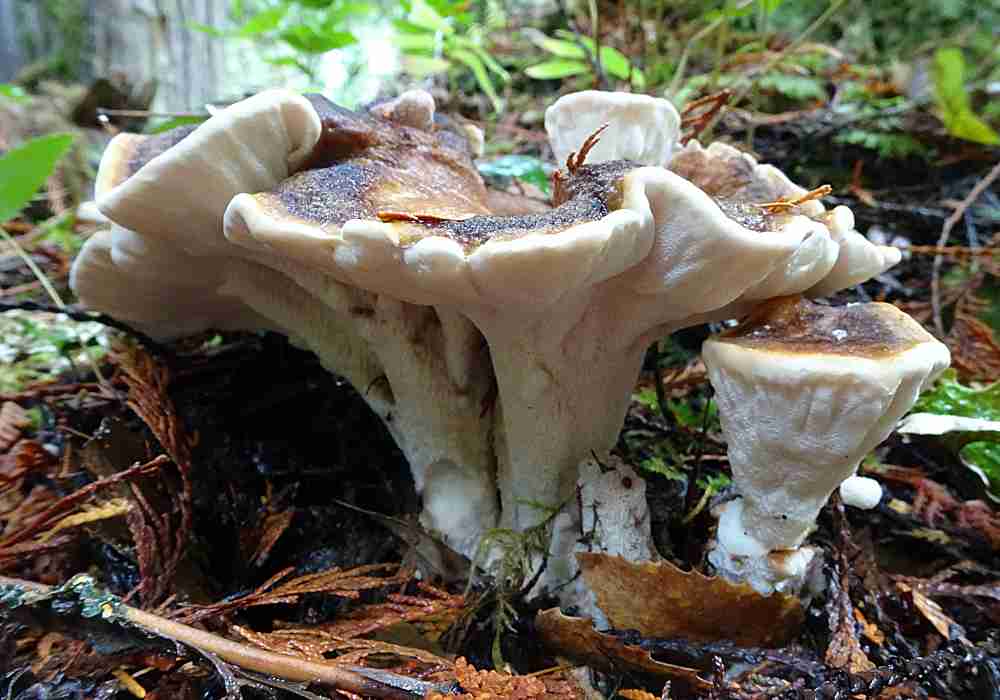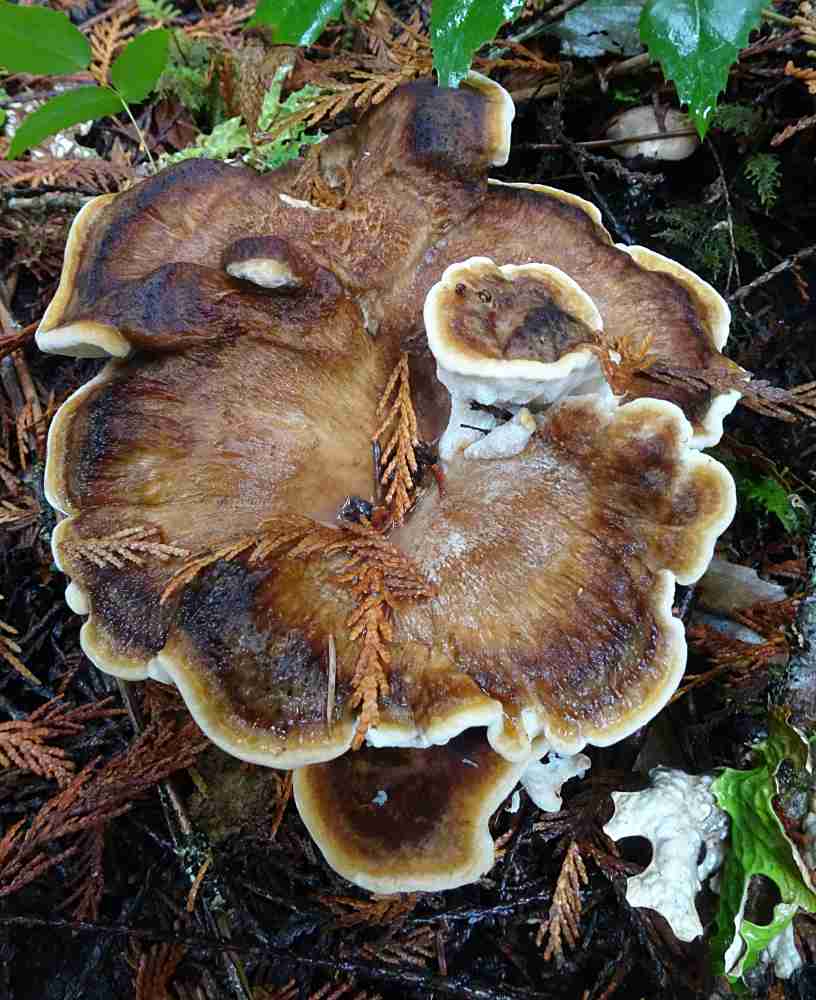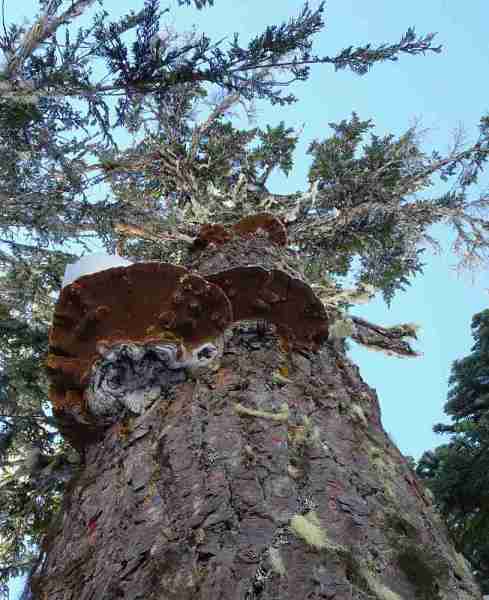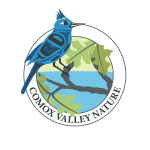From an email by Jocie to the Botany Group on October 16.
I’ve seen some spectacular polypores this fall! Those that grow attached to dead trees and fallen logs are often called “bracket fungus” or “conks.” All have pores underneath rather than spines or gills. Here are a few examples of the harder/woody polypore types (not including turkey tails and other polypores that are more thin and delicate). [Click a photo to enlarge it.]
Please let me know if any of these are misidentified,
- Dyer’s polypore (Phaeolus schweinitzii) – Miracle Beach Park
- Rosy polypore (Rhodofomes cajanderi) – Robert’s Lake area, north of Campbell River
- Red-belt polypore complex (genus Fomitopsis) – Miracle Beach Park
- West coast reishi or varnish conk (Ganoderma oregonense) – This one is quite decayed…with a licorice slug eating it, Miracle Beach Park
- Artist’s bracket fungus (Ganoderma applanatum) – Miracle Beach Park
- Hoof or tinder polypore (Fomes fomentarius) – On a fallen big-leaf maple, Miracle Beach Park
- Willow bracket (Phellinus igniarius) – Growing on the willows at my Mom’s property, Miracle Beach area
- Bondarzew’s polypore (Bondarzewia occidentalis) – From the Shepherd’s Creek trail near the Ralph River Campground, Strathcona Park
- Top view of Bondarzew’s
- Pine polypore (Porodaedalea pini) – On a mountain hemlock, from a ski last winter near Helen Mackenzie Lake

